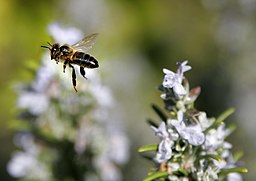A Reflection on Blogging
In preparing to write my blog post and discourse analysis, I first had to do research and read about the topic of declining honeybee populations. Reading Bryan Walsh’s “The Plight of the Honeybee” and Leah Duran’s “The Buzz on Climate Change: It’s Bad for Bees” provided me with two unique perspectives to analyze within the context of the discourse surrounding honeybees. In both articles, the authors discussed the negative impact that the decrease in the honeybee population is having, but they went about doing so in different ways.
Walsh’s perspective as a beekeeper and Duran’s perspective as a scholarly professor impact the way that they engage in the discourse. Their unique perspectives can be analyzed within the context of discourse theories outlined in both Carl G Herndl and Stuart C. Brown’s “Green Culture: Environmental Rhetoric in Contemporary America” and M. Jimmie Killingsworth and Jacqueline S. Palmer’s “Ecospeak: Rhetoric and Environmental Politics in America.” Through examining Bryan Walsh’s and Leah Duran’s respective articles using the lens of the theories in Herndl and Brown’s and Killingsworth and Palmer’s writings, a deeper understanding of how this discourse fits into a larger discourse community can be found.
Discourse regarding the environment can be viewed as ethnocentric, viewing nature as a resource; ecocentric, viewing nature as a spirit; and anthropocentric, viewing nature as an object. Herndl and Brown place these views on a balanced triangle. These different stances may apply to regulatory discourse, poetic discourse, and scientific discourse respectively (Herndl and Brown 11). When looking at the two articles this way, it was interesting to note the ways that these categories applied to them. Beekeeper Bryan Walsh’s “The Plight of the Honeybee” presents an ethnocentric approach to participating in discourse. His focus was primarily on the ways that a decreasing honeybee population negatively affects people from an agricultural standpoint. This view of the honeybees’ role in nature as a resource to humans clearly presents to the reader one way that people may view nature and how that impacts their participation in the discourse regarding it. Professor Leah Duran came from a more ecocentric standpoint, and the focus of her article was to raise awareness of the various ways that climate change negatively affects honeybees and the ways in which her readers may make steps toward a difference. Her participation in the discourse centers around educating readers about nature and in her article she displays a clear respect for the importance of nature.
Thoughts and actions may be the results of the cultural units in which those participating in discourse find themselves in (Killingsworth and Palmer 3). In this case, Bryan Walsh is a beekeeper with personal connections to the agriculture industry in addition to being an editor and writer and Leah Duran is a professor and scholar. This impacts the way that they see the world and the opinions they express. Killingsworth and Palmer similarly present the differing opinions of nature as an object, resource, or spirit, but they place these positions on a continuum rather than a triangle. This continuum reveals the attitudes of various human groups. Both Bryan Walsh and Leah Duran’s stances fall between nature as resource and nature as spirit but their placement correlates to their background. Bryan Walsh’s agricultural ties place him closer to nature as resource while Leah Duran’s scholarly and environmentally conscious stance correlate to social ecology and place her closer to nature as spirit. The idea of a continuum model is interesting because it breaks down the way that different groups would participate in discourse. Researching articles while keeping these stances and the different groups they might correspond to in mind enriches the reading experience and creates a deeper understanding of the ways in which one’s background and “cultural unit” may impact what they add to any discourse they engage in.
It is interesting to think about these discourse theories as we view discourse through an analytical and critical lens. When writing my blog post, I drew from these concepts regarding world view to examine the way that Walsh and Duran interacted with both the information they brought to the discourse and the preexisting discourse. When reading, it is important to ask oneself why the writer presents their information in this way, what they are trying to express, and how their viewpoint fits into the larger discussion and discourse. In doing so, a strong analysis can be found and a deeper understanding can be reached.

Comments
Post a Comment